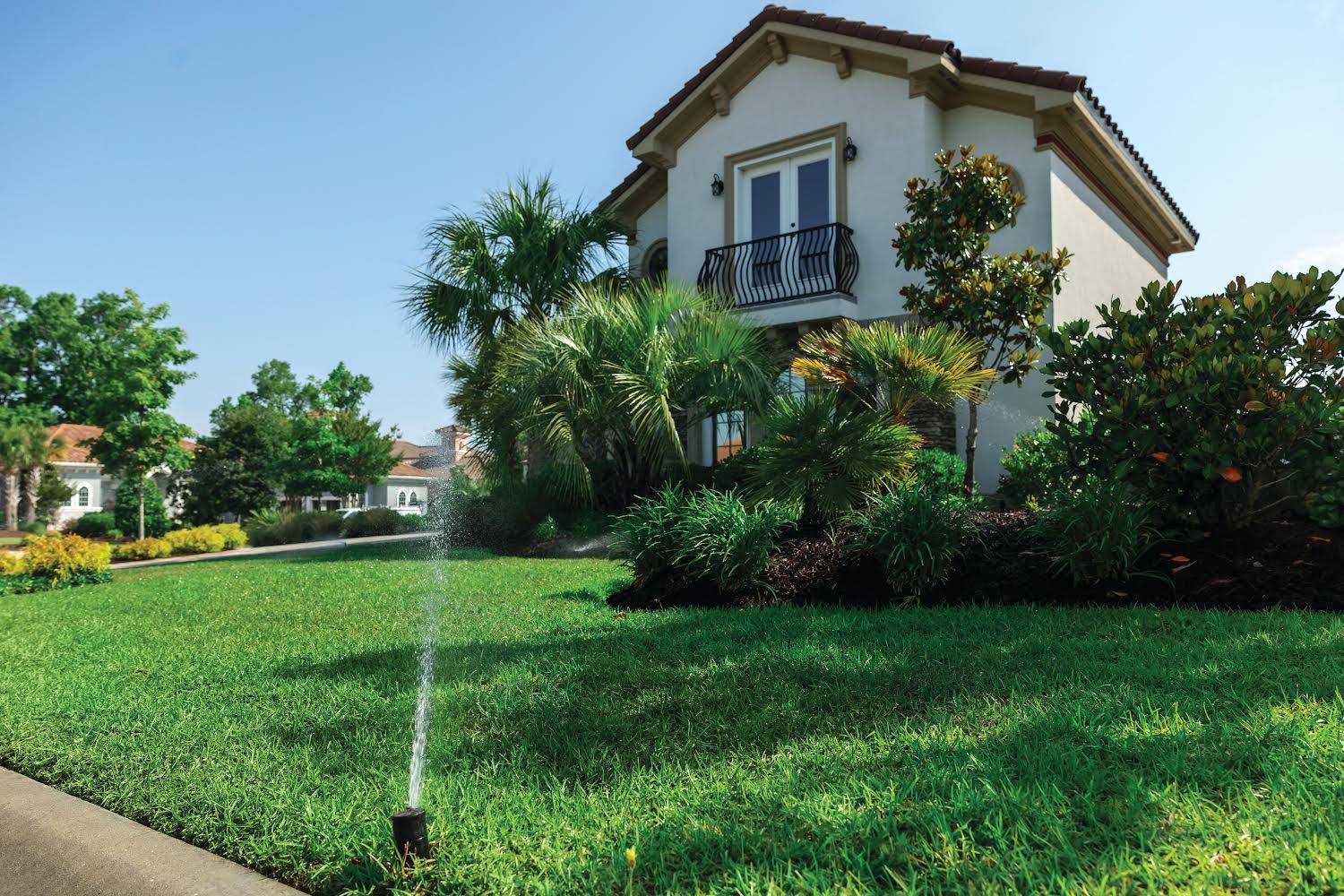As the summer heat fades into cooler fall temperatures, it's time to adjust your sprinkler system to avoid overwatering. Fall typically brings increased rainfall and lower water needs for your lawn and garden. Running your system for the right amount of time can save you money, conserve water, and keep your plants healthy. So, how long should you run your system this fall? Let's break it down by zone type.
1. Spray Zones (Pop-up Spray Heads) 💦🌸
Spray zones deliver water over smaller, more targeted areas, like flower beds or small lawns. These heads provide high water output, so it's easy to overwater if you don't adjust the run time during the cooler months.
Recommendation:
- Run spray zones for 8-12 minutes per cycle.
- Frequency: 2-3 times a week in dry conditions, but reduce as cooler temperatures and rainfall increase.
- Best Time: Water early in the morning to reduce evaporation and give the soil time to absorb moisture before the day heats up.

2. Rotor Zones (Rotating Sprinkler Heads) 💦🌿
Rotor heads water larger areas, such as wide lawn spaces, and do so more slowly than spray heads. This means they require longer run times, but less frequent cycles.
Recommendation:
- Run rotor zones for 20-30 minutes per cycle.
- Frequency: 1-2 times a week, adjusting based on rain or cooler weather.
- Why: Rotor heads apply water more slowly, allowing for deeper soil penetration without runoff.

3. Drip Irrigation Zones 💦🌱
Drip irrigation is the most water-efficient method, delivering water directly to the plant's roots with minimal evaporation or runoff. This is typically used in garden beds or around trees and shrubs.
Recommendation:
- Run drip zones for 30-45 minutes per cycle.
- Frequency: Once a week should be sufficient in the fall, as plants need less water when temperatures cool.
- Why: Drip systems provide slow, targeted watering, allowing moisture to penetrate deeply into the soil.
4. Leveraging Smart Controllers for Efficient Watering 🤖💦
If you're using a smart controller like the Hunter Hydrawise, you're already ahead of the curve. Smart controllers adjust your watering schedule automatically based on weather conditions, ensuring your lawn and garden get the right amount of water without waste. They even pause watering on rainy days or when significant rain is expected.
By setting up your zones properly, you can let your smart controller take over and handle seasonal adjustments for you.
Check out this YouTube video for more information about the Hydrawise systems that we use!
5. Avoiding Water Waste: Tips for Efficient Watering 💧✅
Whether you're using spray, rotor, or drip zones, following these simple practices will help prevent water waste and keep your system running efficiently:
- Water in the early morning: This reduces evaporation and helps the water soak into the soil.
- Cycle and soak: For areas prone to runoff, break longer watering sessions into shorter cycles with breaks in between to allow water to absorb.
- Check your system: Inspect sprinkler heads for leaks, clogs, or misaligned heads to ensure water is being delivered where it's needed most.

Need Help Adjusting Your System for Fall? 🍂🔧
If you're unsure how to adjust your sprinkler system for fall or want to make sure it's optimized for cooler weather, we're here to help! Our team can perform a fall sprinkler inspection and ensure your system is running efficiently for the season. We can also set up a smart controller to make automatic adjustments for you, so you can relax while your lawn stays healthy.
Call us today at 832-706-2688 to schedule your fall system check and keep your yard thriving without wasting water! 🌱💦